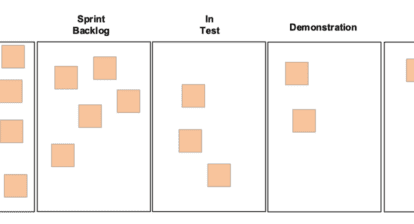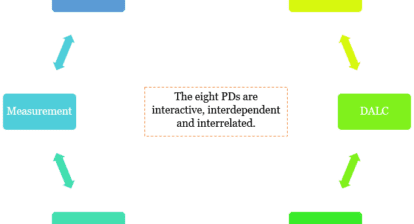 With many forms and faces and with a variety of roles, stakeholders are a valuable part of any project. Based on a recent article by Robert Youlker, stakeholders comprise people both inside and outside of an organization who have an interest in a problem and its solution. Fractured relationships with stakeholders can create a fragmented project, but building positive relationships with the stakeholders of your project is a win-win. Positive relationships strengthen project processes by maintaining strong connections between all members of the team. Yes, stakeholders are members to the team, too. Predictable processes and connections result in a more cohesive group. Here are five actions you can take to create successful relationships with the stakeholders supporting your next successful project.
With many forms and faces and with a variety of roles, stakeholders are a valuable part of any project. Based on a recent article by Robert Youlker, stakeholders comprise people both inside and outside of an organization who have an interest in a problem and its solution. Fractured relationships with stakeholders can create a fragmented project, but building positive relationships with the stakeholders of your project is a win-win. Positive relationships strengthen project processes by maintaining strong connections between all members of the team. Yes, stakeholders are members to the team, too. Predictable processes and connections result in a more cohesive group. Here are five actions you can take to create successful relationships with the stakeholders supporting your next successful project.
1. Identify Your Culture
Culture creates the environment that either helps your project to thrive or fractures the fabric of your activities. In the PMI article titled The Meaning and Importance of Culture for Project Success, Lawrence Suda suggested that a strong culture shapes the organization’s decision patterns, guides actions, and drives the individual behavior of all members. A distinct culture helps your stakeholders to know that you value attention to detail in the way you do work. A defined culture also aids stakeholders in determining if they fit into an environment where work takes place. For instance, if your defined culture is relaxed and casual, but a stakeholder is looking for serious and industrial behaviors, then the fit to the project may not work since the stakeholder’s way of doing business may not match the defined way that behaviors occur. More than one project has been derailed by clashes in personality and/or workstyle.
2. Manage Expectations
So that they know what to expect and when to anticipate project momentum, make sure that stakeholders have a clear understanding of the Project Goals and timelines. The information given to stakeholders should be accurate and timely. This will help stakeholders feel as if the project manager is functioning effectively and the project is remaining on track. One critical aspect of managing expectations includes keeping your words matched to the actions you take. Expectations are difficult to manage if the words and actions of team members do not match. If you say that a goal will be met by Thursday, then make sure it happens, and if it doesn’t, document why the change occurred.
3. Maintain Consistent Communication
Make sure to communicate project information openly and regularly to your stakeholders. This keeps them informed with an overall understanding of the project as it moves forward. Set up a communication plan that considers all team members. Stakeholders will feel more connected and engaged when they are informed. Some stakeholders may want an annual report, while others may request weekly updates. Whatever the plan, consistency helps to build trust and engagement.
4. Show Appreciation
Find ways to show your stakeholders that they are appreciated. This could come in many forms such as a thank you card, email, or even a small token of gratitude. Think about ways to show your appreciation for stakeholders that fit into your defined culture. If you are a casual company, perhaps an open house invitation goes out to stakeholders to celebrate a project milestone. If your stakeholders are less involved, you could send them a gift card that fits in with the theme of the project. Stakeholders want to feel like they are a part of something special and that they have invested wisely. Let your stakeholders know that they are an essential part of the team.
5. Identify Clear Boundaries
Before the start of the project, set up clear boundaries around what the role of the stakeholders will be. If a stakeholder is to be behind the scenes, establish this right way. Ideally, everyone should have agreements in advance which establish their particular roles for the duration of the project. Clear boundaries and defined roles also help to manage expectations, not only for the stakeholder, but also for the team members. Perhaps you will not have a say in establishing stakeholder boundaries. In these situations, keep the focus on the facts and the plan. Don’t let emotions become a focus of discussions that arise. It is easy when faced with a challenging stakeholder to lose sight of your goals or to shift your focus to difficult behaviors. if this occurs, you’ll start to see a breakdown in the defined culture and a reduction in the ability to manage expectations. Avoid this path by being proactive. One way to do this is by incorporating team meetings into your project plan that include the stakeholders, so that everyone can work together to implement constructive expectations and communication.
As a project manager, you will build a more successful project when you work to build positive relationships with stakeholders. You can start right away by implementing these five things!







